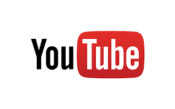Tailoring Your Content Marketing To Fit Your Audience





by Tony Vidler ![]()
![]()
![]()
 One size does not fit all when it comes to content marketing: you need to tailor your content fit your audiences’ desires and needs. It needs to be made to measure as it were.
One size does not fit all when it comes to content marketing: you need to tailor your content fit your audiences’ desires and needs. It needs to be made to measure as it were.
As more professionals tap into the power of content marketing and create a presence on multiple social media channels and integrate those with other marketing tactics such as branded email, blogs and so on, a common mistake is thinking that the same content will resonate across each platform.
The thing to remember is the same audience goes to different platforms for different things. That means if we are to be effective and relevant to our audience on each of those platforms then we need to understand what it is they are looking for when our prospects and clients are spending time on particular platforms.
A working example will explain it best:
Let’s take my own content marketing and look at how different content is used on different channels. I am not necessarily saying that I have it right, as it is a constant “work in progress” of listening to feedback and viewing analytics to see what content resonates, and adjusting accordingly, but it is an example of theming different channels for the same audience.
The audience: Financial services advice professionals.
The marketing strategy: Deliver practical sales & marketing and practice management material in order to demonstrate value and expertise.
The objective: Have financial services advice professionals (or the organisations they are aligned to) engage me for their own bespoke needs in developing their practice, with a particular emphasis upon improving sales and marketing results.
While this may sound like a piece of self-promotional claptrap, it is not that at all…..
The first step in understanding how to theme different delivery channels is to be very clear about who you are trying to appeal to, and what your objective is, and then understanding what “value” (or “valuable”) is to them. In addition, you need to understand the audience well enough to know what type of content or material they want to access in different ways.
This is a crucial point: Different things are wanted by the same audience at different times and in different mediums – they want to consume some of those different areas of knowledge in different ways.
So I decide (for example) to use LinkedIn, Twitter, Facebook and a blog to reach, create and engage with my target market via social, and support that with regular branded email e-zines and updates. Here is how the content strategy differs across each:
![]() There are 3 distinct opportunities to engage with the audience on Linkedin:
There are 3 distinct opportunities to engage with the audience on Linkedin:
Regardless of which area of LinkedIn I am using there is a clear “style” to adopt: it is a professional platform which is predominantly used during work time. That means we need to keep the content focused upon the topical matters for this audience. Information needs to be both timely and relevant.
Use the personal profile content sharing options on the homepage for “new” information which is leading edge or provides unique insights wherever possible. The objective is to be delivering fresh thinking and different angles in order to establish a “thought leadership” position. Ideally we want to be listened to, don’t we?
The same viewers will (to a lesser extent) be willing to follow the associated LinkedIn company page if it too has useful information, but your position there is more of a “slow burner”. Less frequent posting of articles and information which is not necessarily timely, but of more lasting value. The sort of resource which is still very relevant for the audience in a months time, as they may only visit that area of LinkedIn every few weeks. It is however another way of engaging them and being seen as a valuable resource. The theme here (in this example) needs to be highly complementary to the rest of the marketing strategy, but still different….so content in this area is focused upon practice management and self improvement ideas. Complementary….but different content….
In my working example here that means on the company page the focus is on “practice management” issues for financial advsers, whereas the personal LinkedIn pdates are more about topical issues and emerging themes within the industry. Complementary, but different.
LinkdIn groups present a wonderful and different opportunity to build an udience be tapping into the desire of folk to congregate around topics or subject areas that particularly interest them. If you can do that while focussing the audience upon your particular area of expertise, or that for which you wish to become known as an expert, it is even better. If I am wanting to establish a position in the audience’s mind of knowing about “practical sales and marketing” ideas, then guess what? I establish a group focused upon delivering only practical sales and marketing material, and then make sure everyone in my wider audience knows that it exists if that is what they are particularly looking for at any time. And because there is a crowd gathered around that topic it gathers other potential audience members who do not yet know me…but they will in time.
![]() Fast moving….the internet whizzing by on your phone at thousands of articles per minute….a tough platform to build an audience in perhaps?
Fast moving….the internet whizzing by on your phone at thousands of articles per minute….a tough platform to build an audience in perhaps?
Not really. You just have to be there often enough to continue to be found amongst the gazillions of items, and you also need to become adept at using other people’s content. So here is the key to making Twitter work as a content marketing tool: Share lots of “on point” material for your audience, but do not waste time creating it all. In addition, it is important to understand that the audience uses this channel for a mix of work and pleasure. More often than not they are using Twitter during work time a little, and then more heavily at either end of the work day: dipping into Twitter at the beginning and end of the day. They are in “work mode”, though not fully engaged in their professional headspace perhaps.
People like to dip in and out of Twitter….they come and go frequently, and pause on snappy headlines or hashtags that draw them to their areas of interest. Variety of content matters here, but so too does injecting a little personality and having a little fun. The quick witted thrive here and can engage with vast numbers of potential prospects….however at the end of the day we are doing this for commercial reasons, right?
Once again the objective is to build an audience of potential clients who want to listen to what you have to say, but because the channel operates very differently to LinkedIn (for example) and has quite a different culture and ethos, you have to adjust your delivery style in order to be relevant there.
Be there waaaaaaaay more often than on LinkedIn for instance if you want to have any hope of building an audience….because things are moving along a lot faster and people are not entirely in their professional headspace when using the platform. And the content volume is just so overwhelming…As a consequence, your delivery style needs to shift a little to be a little more personable and personal, and willing to engage one-to-one a little more.

Emphasis upon practical “how-to’s” which are delivered in a short and easily digestible format.
To work well it has to be reasonably strong on visual elements (it is a visual platform after all!), but also delivery style has to be at a strong pace too. The audience goes to YouTube to see how something is done, and they don’t want to hang around for hours either….they’ve got things to do! They are busy…“just get on with it and get into the guts of it straight away”
The theme remains the same: delivering practical ideas. The angle differs however: Get straight to the point and show or tell people how to do something….short, sharp, practical and “on brand” as that say in the marketing world. But…build content that is going to have some durability and still be pertinent in a years time.

This one is all about you.
To be more specific: this one is all about your thoughts and opinions. This is the one where the audience makes a deliberate choice to engage with you and your content. Your prospects are listening to you here. It is the channel to develope a position as a thought leader or as an expert.
The blog is where you get to really showcase your particular expertise and positioning and expand upon things in much greater detail (like this post, right?). To build an engaged audience with the blog there are a lot of things to get right, not least of which is:
Essentially your blog is your “voice” – it is an essential element of Brand You and showcases how you can help the very people you want as future clients. That is a powerful marketing tool.
Supporting all of these relatively “passive” marketing tactics with a proactive channel creates higher engagement and moves prospective future clients further along in their buying journey. In simple terms; having people shift from just being one of the crowd following a platform to actively signing on to a newsletter, or e-zine, increases their engagement level and likelihood of wanting to do business with you at the right time for them.
The bottom line is that the same audience goes to different channels for different types of learning or engagement, and they are often at different levels of involvement with the content on the different channels. The common word throughout just then was “different”….it follows that if we want our marketing to be more effective we need to understand that while our objective may be consistent, the audience is not consistent in their consumption of our content.
We have to tailor it to the different platforms, moods and desires of the audience if we want to be really effective and have them feel that we are a valuable resource.
Comments (1)